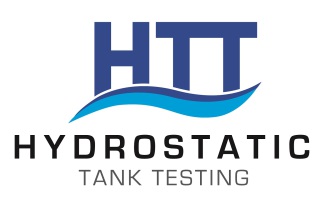Frequently Asked Questions
What Is Hydrostatic Testing?
Hydrostatic testing uses high-pressure water to check your cylinder's structural integrity by subjecting it to stress and discovering possible permanent expansion or overexpansion of the tank walls, indicating unsafe structural deficiencies. All testing is done within a water jacket to ensure safety in the event of catastrophic tank failure.
How often do my tanks need to be tested?
Inspection intervals vary by cylinder type, manufacturer, application, and frequency of use. The following list highlights some general limits based on DOT published requirements:
-
SCUBA Tanks Marked 3AL (Every 5 years – No Life Limit) Visual Eddy Current test on cylinders manufactured prior to January 1990.
-
Oxygen Bottles Marked DOT 3AA & 3AL (Every 5 years - No Life Limit)
-
Oxygen Bottles Marked DOT 3HT (Every 3 Years - 24 Year Life Limit)
-
Composite Bottles (Every 3 or 5 Years - 15 Year Life Limit)
Why is hydrostatic testing necessary?
Pressurized tanks are regulated by the Department of Transportation. They require testing to reduce the probability of injury caused by catastrophic failure. Every tank must pass an initial DOT certification, visual inspection, and hydrostatic test prior to being sold, and before being filled. Then they are required to undergo a periodic hydro test to ensure the cylinder still meets its original design specifications.
Will it take a long time to hydro-test my tank?
While the actual hydrostatic test takes only a few minutes, the set-up, visual inspection, eddy current testing, and drying add time to the complete process. We pride ourselves on the one-week turn-around pledge we have given to our customers. Need it sooner than one week? Give us a call and we'll do everything possible to meet your request.
What are the common reasons for tank failure?
Common issues involve physical damage, heat exposure, damaged neck threads, degradation in structural integrity, and excessive internal/external corrosion.
If my tank fails, can I still use it?
DOT regulations state that a tank that fails during visual or hydrostatic testing cannot be filled again. The cylinders specification and working pressure markings will be X stamped out, making the cylinder unusable. You will be presented with a written form for your records and a copy to sign to be kept for our records.

